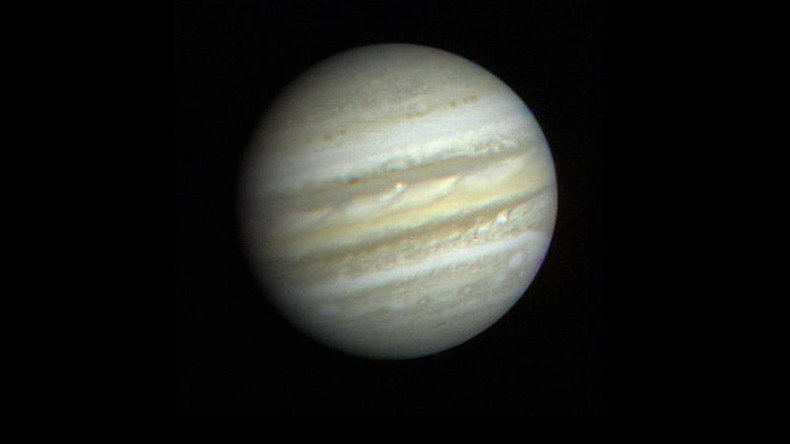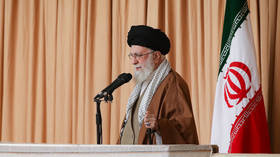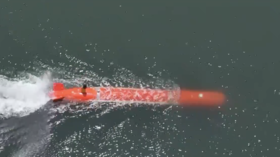NASA spacecraft reveals sounds made when crossing into ‘Jupiter’s home turf’

NASA’s Juno spacecraft, which is heading towards Jupiter, has entered the planet’s magnetic field and has given scientists the chance to hear what it is like to cross from the solar system into “Jupiter’s home turf.”
Juno has almost completed its 3.2 billion km journey to the gas giant, having left Cape Canaveral in August 2011. Scientists were treated to a strange sound as the spacecraft bore down on Jupiter. After being bombarded with particles in the solar system on its approach, the spacecraft faced dramatically less intensity as it neared the planet because of the magnetosphere protecting Jupiter.
"We can actually listen to what it's like to leave the sun and enter Jupiter," Juno's principal investigator Scott Bolton said at a NASA press conference June 30. "Just the sound of it will tell you that it's non-trivial to go into Jupiter."
The sound, which can be heard on the video after about 10 seconds, is actually known as a bow shock. The data was recorded on June 24 when the probe made the crossing.
"The bow shock is analogous to a sonic boom," William Kurth of the University of Iowa in Iowa City, lead co-investigator for the Waves investigation, said in a statement on NASA’s website. "The solar wind blows past all the planets at a speed of about a million miles per hour, and where it hits an obstacle, there's all this turbulence."
Juno is set to start orbiting Jupiter on July 4 and the intensity of the particle bombardment is expected to increase as it gets closer to the planet.
The spacecraft's mission involves peering beyond Jupiter's cloud cover to analyze the planet's aurorae in hopes of gathering more information about Jupiter's origins, structure, atmosphere and magnetosphere.
After a 5-year trek, I’m 1 week from #Jupiter. See the trailer for my #July4th orbit arrival https://t.co/nU3cvipV90pic.twitter.com/lcs71gEfUJ
— NASA's Juno Mission (@NASAJuno) June 27, 2016
"We use every known technique to see through Jupiter's clouds and reveal the secrets Jupiter holds of our solar system's early history," said Scott Bolton, principal investigator of the Juno mission with the nonprofit research and development organization Southwest Research Institute.
Jupiter is of particular interest to scientists because more than half the material left over from when the sun was formed some 4.6 billion years ago ended up in the planet, which is around 11 times bigger than Earth.













